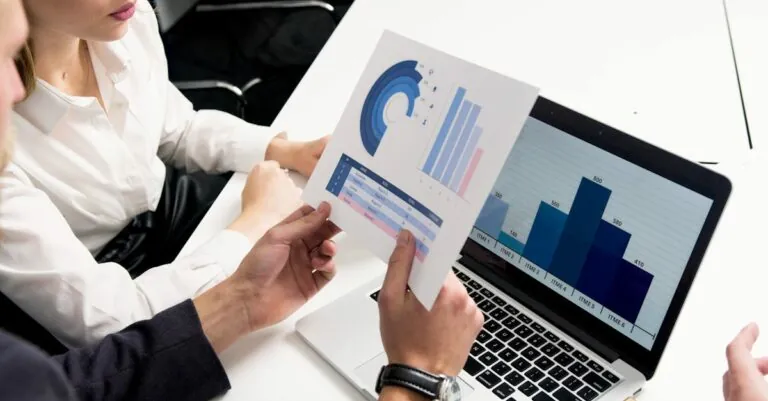Table of Contents
ToggleIn a world where technology evolves faster than a toddler on a sugar rush, economists are finally catching up. Gone are the days of dusty calculators and endless spreadsheets. Today’s economists are armed with powerful tools that can transform data into insights quicker than you can say “supply and demand.”
Imagine algorithms that predict market trends with the accuracy of a well-trained psychic. With the rise of big data, machine learning, and artificial intelligence, economists can now analyze complex patterns and make informed decisions that were once the stuff of dreams. This isn’t just about crunching numbers; it’s about unleashing creativity and innovation in economic analysis.
The Role of Technology in Economics
Technology plays a crucial role in shaping modern economics. It empowers economists with innovative tools for deeper data analysis and insightful market predictions.
Advancements in Data Analysis
Recent advancements in data analysis revolutionize how economists interpret information. Economists utilize big data to uncover trends that were previously hidden. Improved computational power allows for faster processing of vast datasets, enabling more accurate analyses. Visualization tools help present complex data intuitively, making it accessible for stakeholders. Advanced statistical software enhances the ability to model economic phenomena, providing clearer insights for decision making.
The Impact of Machine Learning
Machine learning significantly influences economic evaluations. Algorithms analyze historical data to identify patterns and predict future market movements. This automation leads to improved efficiency in research processes and decision-making. Predictive analytics helps economists assess risks with higher precision. They can adapt strategies promptly based on algorithm-driven insights, ultimately driving better economic outcomes.
Improving Economic Forecasting
Modern technology enhances economic forecasting capabilities. Tools specializing in predictive analytics play a crucial role in this transformation.
Predictive Analytics Tools
Predictive analytics tools allow economists to harness vast amounts of data. With machine learning algorithms, these tools analyze patterns in historical data. By identifying trends, they assist in accurate future predictions. Economists can simulate various scenarios based on real-time inputs. This enables them to create models that reflect changing market dynamics effectively. Software solutions like SAS and IBM Watson deliver insights quicker than traditional methods. Such innovations lead to more informed economic strategies. Decision-makers gain clarity and confidence in their choices.
Real-time Data Monitoring
Real-time data monitoring equips economists with immediate insights. Access to live economic indicators helps professionals track performance continuously. Changes in consumer behavior, for example, can be analyzed as they occur. By leveraging platforms like Google Analytics, economists can monitor fluctuations effortlessly. This technology enables swift adjustments to strategies based on immediate feedback. Continuous updates allow for responsive policy decisions. Forecasts become more relevant and adaptable to current conditions. Ultimately, real-time data enhances the accuracy of economic predictions.
Enhancing Research and Collaboration
Technology significantly boosts research capabilities and collaboration among economists. These advancements enable professionals to share insights efficiently and access diverse perspectives.
Online Platforms for Sharing Insights
Online platforms offer valuable opportunities for economists to exchange knowledge and findings. Economists use tools like Google Drive and Dropbox for real-time data sharing, allowing seamless collaboration on projects. Forums and blogs dedicated to economics also foster discussions, making research more accessible. Additionally, social media platforms like Twitter facilitate connections among economists, promoting idea exchange and enhancing visibility of new research. Virtual communities encourage feedback, enabling economists to refine their work based on collective input.
Virtual Conferences and Webinars
Virtual conferences and webinars create avenues for economists to present research and network with peers. Events hosted on platforms like Zoom or Webex allow for interactive presentations and Q&A sessions, enhancing engagement and learning. Participation in these online events broadens access to expert speakers and global perspectives. Economists can also attend recorded sessions on demand, ensuring they don’t miss valuable insights. These digital formats promote inclusivity, reaching participants who might not travel due to geographical or financial constraints.
Streamlining Economic Policy Formulation
Technology significantly enhances economic policy formulation through efficient data analysis and modeling tools. Economists leverage these advancements to produce reliable simulations of economic scenarios.
Simulation Models and Tools
Simulation models rely on advanced software to replicate economic conditions. Economists utilize tools like AnyLogic and NetLogo to model complex interactions within economies. Customizable simulations allow users to stress-test policies and predict outcomes under varied conditions. They simplify the process of evaluating the effectiveness of potential interventions. By visualizing different scenarios, economists make informed recommendations based on empirical evidence.
Data-Driven Decision Making
Economists prioritize data in decision-making processes, using real-time analytics to guide strategies. They employ platforms such as Tableau and Power BI to analyze vast datasets efficiently. Patterns identified from this analysis lead to improved forecasting and response to economic shifts. Insights generated from data empower economists to adapt quickly to changing circumstances. Algorithms streamline information processing, enabling precise measurements of economic impacts. These practices ensure that decisions reflect current trends, significantly increasing their effectiveness.
The integration of new technology into economics marks a significant shift in how economists approach their work. With tools like big data and machine learning at their disposal they can uncover insights that were previously hidden. This technological advancement not only enhances the accuracy of economic predictions but also streamlines research and collaboration across the field.
As economists continue to embrace these innovations the potential for improved decision-making and policy formulation grows. The ability to analyze vast amounts of data in real-time allows for more agile responses to market changes. Ultimately this evolution in economic analysis paves the way for more effective strategies and a deeper understanding of complex economic phenomena.







